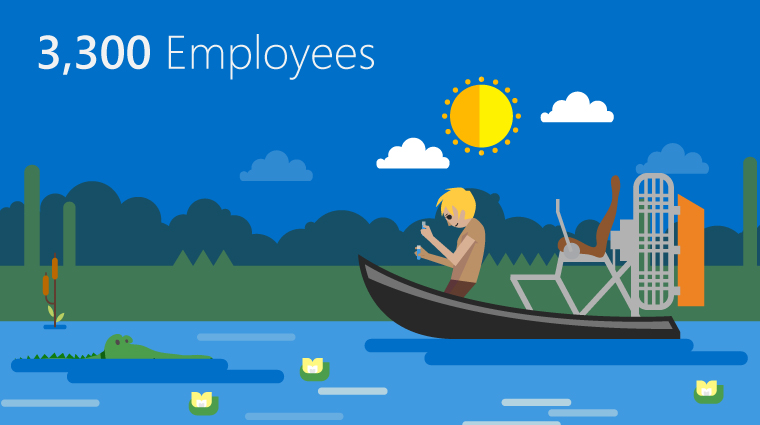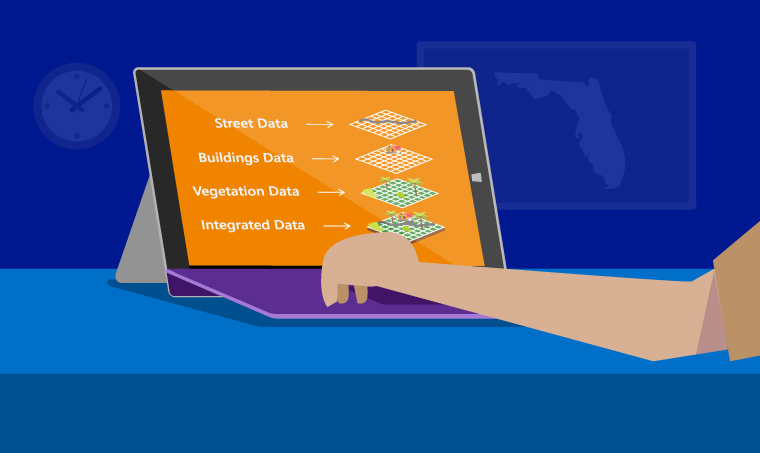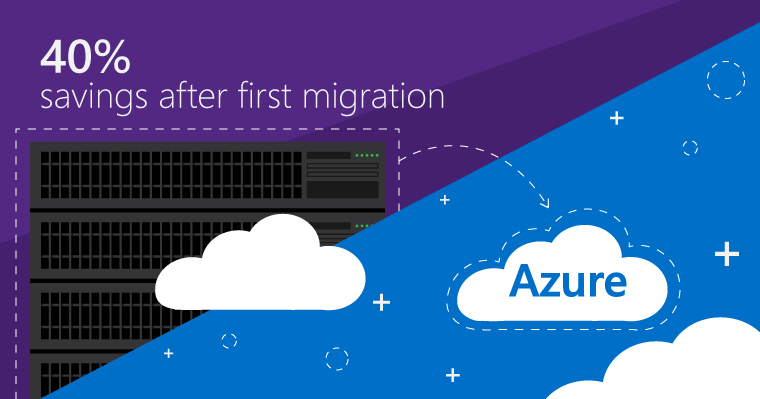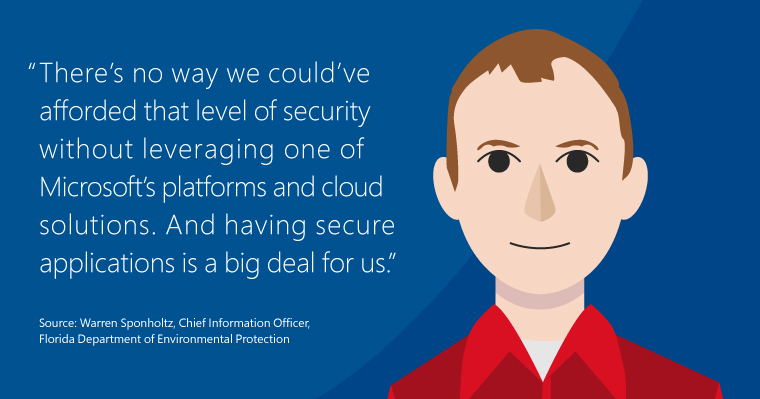
How Florida Dept of Environmental Protection enhances insights
| Focus on: Empower Employees, Optimize Operations, Engage Customers |
Headquartered in Tallahassee, Florida with locations across the state, the Florida Department of Environmental Protection (DEP) is responsible for overseeing the compliance, management, preservation, and restoration of the Sunshine State’s natural resources. The department’s 3,300 employees run three main branches of the DEP. The Land and Recreation branch which includes the Florida Parks Service manages hundreds of campsites and parks all over the state, while the Ecosystem Restoration branch focuses on restoring Florida’s famous wetlands, watersheds, and everglade ecosystems. The Regulatory branch issues permits and ensures compliance with requirements for environmental resources.

Florida has some of the rarest ecosystems in the US. The state’s Department of Environmental Protection is currently in the midst of transforming their digital tools and capabilities to help protect those natural resources around the clock. As one of the first state departments to explore the cloud with a move to Office 365, the DEP has transformed employee efficiency and connectivity with Microsoft’s tools like OneDrive and SharePoint, while increasing communication and collaboration with Skype’s video conferencing features. Under the guidance of Warren Sponholtz, Chief Information Officer, the DEP’s recent pilot of Microsoft Azure, a cloud-based platform for building and managing applications, is only the latest step in their on-going digital transformation.
Transforming hardware and modernizing infrastructure with cloud technology Sponholtz and his team quickly realized that managing the department’s outdated technology was a time-consuming operation that distracted from the actual environmental goals of the DEP. They needed a new solution that would empower their employees to get back to their primary responsibility of protecting Florida’s rare natural treasures.

The department began their transition toward increased efficiency though the consolidation of all state agency data into one statewide on-premises datacenter. The centralized structure meant a service provider would manage the details of their infrastructure, instead of the department having to manage it themselves. According to Sponholtz, the process was liberating for DEP IT staff, demonstrating the benefits of outsourcing their datacenter management to dedicated specialists. The DEP then began seriously considering their next step: a full digital transformation that leveraged the power of cloud technology to take their data management to the next level.
Exploring Florida’s state-wide Geographic Information System One of the DEP’s most valuable tools is their Geographic Information System (GIS), providing the department with a dynamic view of the location and condition of state lands and publicly-owned property. The digital tool helps the department visualize and trace environmental trends over time with 3D mapping capabilities, allowing them to monitor everything from beach erosion to air quality monitoring.

“Environmental restoration is something that’s not measured in weeks and months; it’s measured year after year, and decade after decade,” Sponholtz explains. “Being able to have a picture of the way things are then and now over long periods of time is an effective way of showing progress.” With the amount of data required to power the department’s GIS technology, the DEP needed a cost-effective digital solution that could meet those needs while promoting increased efficiency and flexibility. Microsoft Azure served as the perfect cloud platform for the department to begin the next step of their digital transformation.
Developing in an Azure-based GIS solution with cloud technology Keeping the department’s specific digital requirements in mind, Sponholtz’s team developed a new digital system to support their GIS technology, leveraging Azure’s innovative and versatile platform. Scheduled for production implementation in the coming months, the solution is already displaying noticeable benefits. Azure’s cloud technology allows for consistent access to the department’s data despite maintenance windows and outages. The reliable platform allows employees to maintain productivity, and increases accessibility for the department’s interactive maps, enterprise GIS data library, and other public-facing assets. “It really just helps tell the story about what we need to do and what we have done in our role of watching over and restoring the environment,” says Sponholtz.

Leveraging Azure also provided considerable cost savings for the DEP. An on-premises solution that offered the same kind of data availability as Azure would’ve been far more expensive. With Azure, the department saved approximately 40% over the course of their first migration and estimates saving another 20% with their next data migration. In addition, the DEP already uses the Internet to deliver applications and manage most of their processes, so migrating to Microsoft’s cloud services has been a logical transition for their datacenter.
Promoting world-class security with Microsoft’s Azure platform As with any government agency, digital security is a top priority—especially when considering new digital solutions and technology migrations. For Sponholtz, the eventual goal of the Azure migration is to create a secure digital infrastructure with built-in disaster recovery measures, ultimately rendering those disasters barely noticeable to the public. Microsoft’s attention to digital protection makes Azure the perfect technology foundation to build additional applications and security measures. “There’s no way we could’ve afforded that level of security without leveraging one of Microsoft’s platforms and cloud solutions,” Sponholtz explains. “And having secure applications is a big deal for us.”

With Azure, the DEP has access to an affordable, cutting edge digital platform with some of the best security features in the industry. The innovative system allows the department to leverage state’s GIS data to provide meaningful insights that empower employees to be effective and efficient stewards of Florida’s environment and natural resources.
Related Content





